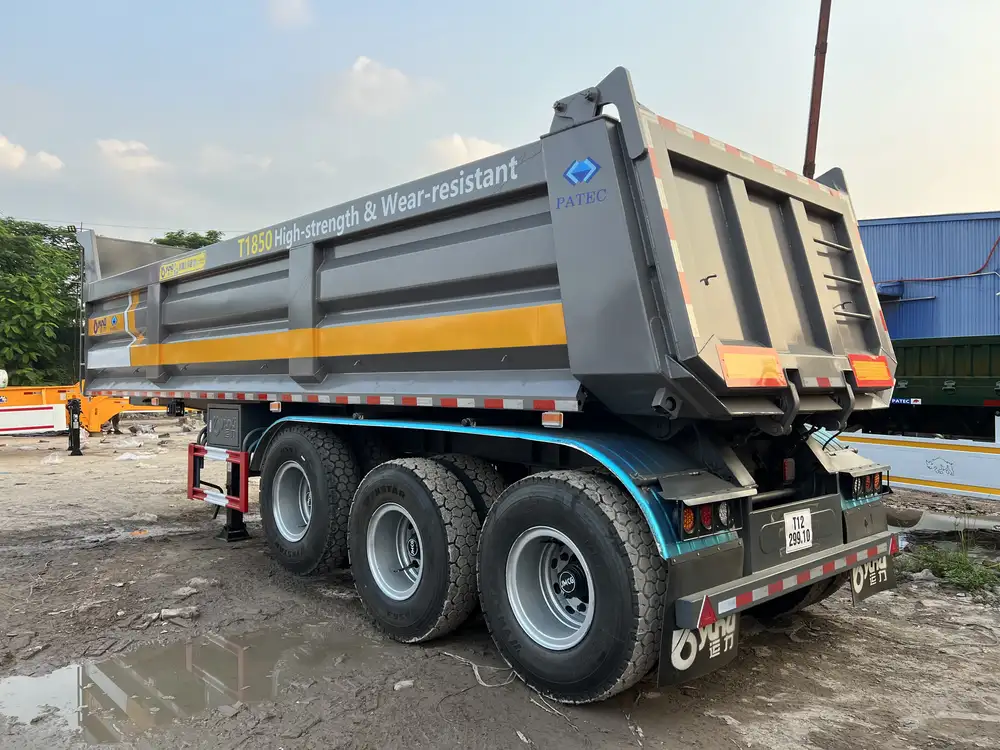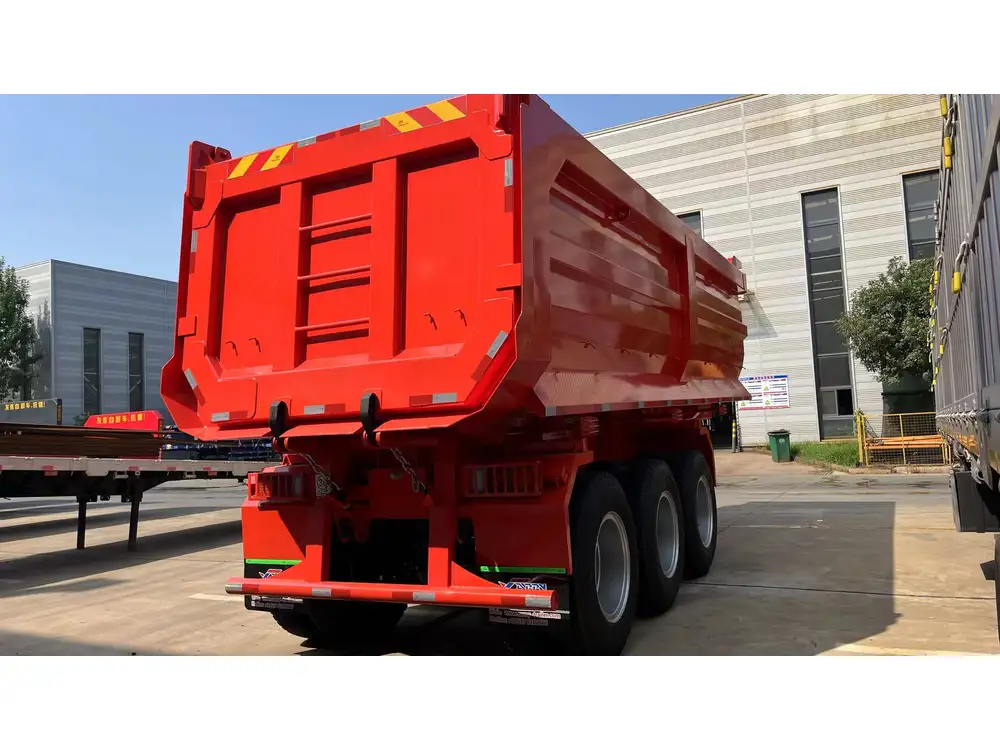Navigating the world of dump trailers can be daunting, particularly when it comes to maintaining and charging the battery efficiently. Understanding the intricacies of charging a dump trailer battery not only enhances its longevity and performance but also ensures seamless operations on job sites. In this article, we will delve into the essential aspects of charging a dump trailer battery, exploring practical tips, common issues, and troubleshooting techniques.
Understanding the Dump Trailer Battery
Types of Batteries Used in Dump Trailers
Lead-Acid Batteries: The most common type, these batteries are robust and cost-effective. They come in two variants:
- Flooded Lead-Acid (FLA): Requires regular maintenance and topping off with water.
- Absorbent Glass Mat (AGM): Maintenance-free, offering higher resistance to vibration and spill-proof.
Lithium-Ion Batteries: An emerging choice, known for their lightweight and longer lifespan, though they come at a premium price.

Importance of a Well-Maintained Battery
Proper battery maintenance is crucial for:
- Maximizing Operational Efficiency: Ensures that the dump trailer operates optimally.
- Extending Battery Life: Regular checks and charges can significantly prolong battery lifespan, minimizing replacement costs.
- Preventing Downtime: A well-charged battery reduces the risk of unexpected breakdowns during critical tasks.
How to Charge the Battery on a Dump Trailer
Charging the battery of a dump trailer involves several steps, which we’ll detail below for clarity and effectiveness.
Step 1: Assess the Battery State
Before initiating the charging process, it’s vital to evaluate whether the battery requires charging. You can employ the following methods:
- Multimeter Test: Use a multimeter to check the battery voltage. A healthy lead-acid battery should read at least 12.6 volts when fully charged. For lithium-ion batteries, refer to the manufacturer’s specifications.
- Visual Inspection: Look for signs of corrosion on terminals, cracks, or swelling of the battery casing.

Step 2: Safety Precautions
Prioritize safety by following these precautions:
- Wear Protective Gear: Gloves and eye protection are essential in case of battery acid splashes.
- Ventilation: Ensure the workspace is well-ventilated to prevent the build-up of harmful gases.
- Disconnect Power Supply: If the dump trailer is connected to an external power source, disconnect it before proceeding.
Step 3: Prepare Charging Equipment
Gather the necessary equipment, including:
| Equipment | Purpose |
|---|---|
| Battery Charger | Specifically for the battery type (lead-acid or lithium-ion). |
| Jumper Cables | For connecting the charger securely to the battery. |
| Protective Gloves | For safety while handling the battery. |
Step 4: Charging Process
Connect the Charger:
- For a lead-acid battery, connect the red positive (+) cable to the positive terminal of the battery, followed by the black negative (-) cable to the negative terminal.
- For lithium-ion batteries, follow the manufacturer’s instructions for connections, as these can vary.
Choose the Correct Charging Mode:
- Conventional Charging (for lead-acid): Involves a steady current; typically takes around 8-12 hours.
- Fast Charging (for lithium-ion): Offers quicker charging times but should be monitored closely to avoid overheating.
Monitor the Charging Process:
- Continuously check the battery voltage during the process. A voltage above 13.6 volts during charging for lead-acid batteries indicates the battery is charging successfully.
- For lithium batteries, refer to their built-in indicators.
Complete the Charging:
- Disconnect the charger once the battery reaches a full charge, indicated usually between 12.6 and 12.9 volts for lead-acid and 13.5 to 14.6 volts for lithium.

Step 5: Reconnect and Test
After charging, reconnect the battery to the dump trailer:
- Reconnect Terminals: Reattach the terminals, securing the connections properly.
- Visual Inspection: Ensure no corrosion or damage is visible post-charging.
- Test Operation: Operate the dump trailer briefly to confirm that electrical systems are functioning correctly.
Troubleshooting Common Charging Issues
In the event of problems during the charging process, consider the following common issues:
Insufficient Charging
- Indicators: Battery does not respond, remains discharged.
- Causes: Faulty charger, poor connections, or an aging battery.
- Resolution: Inspect connections and replace the charger if necessary.

Overheating
- Indicators: High temperature during charging.
- Causes: Excessive charging current or faulty battery components.
- Resolution: Stop charging immediately, allow cooling, and check for damage.
Battery Swelling or Leakage
- Indicators: Visual swelling or acid leaks.
- Causes: Overcharging or defective cells.
- Resolution: Replace the battery and dispose of it responsibly.
Frequently Asked Questions (FAQs)

What is the ideal voltage for a fully charged dump trailer battery?
A fully charged lead-acid battery should register about 12.6 to 12.9 volts, while lithium-ion batteries will vary but generally hover around 13.5 to 14.6 volts.
How often should I charge my dump trailer battery?
Charging frequency depends on usage. For regular use, a weekly charge is advisable, while occasional users may charge after every use to maintain longevity.
Can I charge my dump trailer battery while it’s still connected to the trailer?
It’s generally advisable to disconnect the battery to ensure safety and prevent any electrical issues while charging.

What are the signs that my dump trailer battery is failing?
Look for longer-than-usual charging times, difficulty starting, or physical indicators like swelling, leakage, or corrosion.
Conclusion
Understanding how to properly charge the battery on a dump trailer plays a critical role in maintaining its functionality and dependability. By following the detailed steps outlined in this guide, operators can ensure that their trailers remain operable while reducing the risk of potential issues arising from poor battery management. Regular maintenance, mindful operations, and timely troubleshooting will not only enhance the performance of dump trailers but also safeguard your investment in these invaluable assets. Remember, a well-maintained battery is the heart of any successful dump trailer operation, powering your projects with reliability and efficiency.



